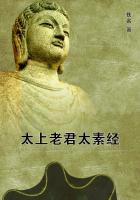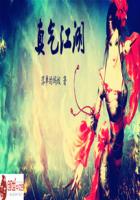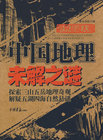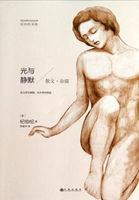By 1367,the town has made such inroads on the suburb that a new enclosure has become necessary,especially on the right bank,and is accordingly built by Charles V.But a town like Paris is in a state of perpetual growth—it is only such cities that become capitals.They are the reservoirs into which are directed all the streams—geographical,political,moral,intellectual—of a country,all the natural tendencies of the people;wells of civilization,so to speak—but also outlets—where commerce,manufacture,intelligence,population,all that there is of vital fluid,of life,of soul,in a people,filters through and collects incessantly,drop by drop,century by century.The wall of Charles V,however,endures the same fate as that of Philip Augustus.By the beginning of the fifteenth century it,too,is overstepped,left behind,the new suburb hurries on,and in the sixteenth century it seems visibly to recede farther and farther into the depths of the old city,so dense has the new town become outside it.
Thus,by the fifteenth century—to go no farther—Paris had already consumed the three concentric circles of wall,which,in the time of Julian the Apostate,were in embryo,so to speak,in the Grand-Chatelet and the Petit-Chatelet.The mighty city had successively burst its four girdles of wall like a child grown out of last year's garments.Under Louis XI,clusters of ruined towers belonging to the old fortified walls were still visible,rising out of the sea of houses like hilltops out of an inundation—the archipelagoes of the old Paris,submerged beneath the new.
Since then,unfortunately for us,Paris has changed again;but it has broken through one more enclosure,that of Louis XV,a wretched wall of mud and rubbish,well worthy of the King who built it and of the poet who sang of it:
'Le mur murant Paris rend Paris murmurant.'
In the fifteenth century Paris was still divided into three towns,perfectly distinct and separate,having each its peculiar features,speciality,manners,customs,privileges,and history:the City,the University,the Town.The City,which occupied the island,was the oldest and the smallest of the trio—the mother of the other two—looking,if we may be allowed the comparison,like a little old woman between two tall and blooming daughters.The University covered the left bank of the Seine from the Tournelle to the Tour de Nesle—points corresponding in the Paris of to-day to the Halles-aux-Vins and the Mint,its circular wall taking in a pretty large portion of that ground on which Julian had built his baths.2 It also included the Hill of Sainte-Geneviève.The outermost point of the curving wall was the Papal Gate;that is to say,just about the site of the Panthéon.The Town,the largest of the three divisions of Paris,occupied the right bank.Its quay,interrupted at several points,stretched along the Seine from the Tour de Billy to the Tour du Bois;that is,from the spot where the Grenier d'Abondance now stands to that occupied by the Tuileries.These four points at which the Seine cut through the circumference of the capital—la Tournelle and the Tour de Nesle on the left,the Tour de Billy and the Tour de Bois on the right bank—were called par excellence'the four towers of Paris.'The Town encroached more deeply into the surrounding country than did the University.The farthest point of its enclosing wall(the one built by Charles V)was at the gates of Saint-Denis and Saint-Martin,the situation of which has not changed.
As we have already stated,each of these three great divisions of Paris was a town—but a town too specialized to be complete,a town which could not dispense with the other two.So,too,each had its peculiarly characteristic aspect.In the City,churches were the prevailing feature;in the Town,palaces;in the University,colleges.Setting aside the less important originalities of Paris and the capricious legal intricacies of the right of way,and taking note only of the collective and important masses in the chaos of communal jurisdictions,we may say that,broadly speaking,the island belonged to the Bishop,the right bank to the Provost of the Merchants'Guild,and the left bank to the Rector of the University.The Provost of Paris—a royal,not a municipal office—had authority over all.The City boasted Notre-Dame;the Town,the Louvre and the Htel-de-Ville;the University,the Sorbonne.Again,the Town had the Halles,the City the Htel-Dieu,the University the Pré-aux-Clercs.3 Crimes committed by the students on the right bank,were tried on the island in the Palais de Justice,and punished on the right bank at Montfaucon,unless the Rector,feeling the University to be strong and the King weak,thought fit to intervene;for the scholars enjoyed the privilege of being hanged on their own premises.
Most of these privileges(we may remark in passing),and there were some of even greater value than this,had been extorted from the kings by mutiny and revolts.It is the immemorial course:Le roi ne lache que quand le peuple arrache—the King only gives up what the people wrest from him.There is an old French charter which defines this popular loyalty with great simplicity:Civibus fidelitas in reges,q amen aliquoties seditionibus interrupta,multa peperit privilegia.4















